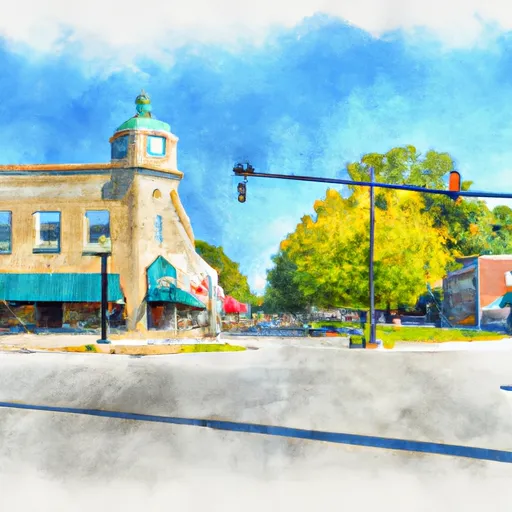-
 Snoflo Premium
Snoflo Premium
Get unlimited access to all our content
With no Ad interruptions! - Start Your Free Trial Login with existing account
Bath
Eden Index
Climate
8.3
•
Recreation
5.7
•
Community
•
Safeguard
5.3/10

Bath, Indiana is a small town located in Franklin County with a population of around 300. The town's climate is classified as humid continental with hot summers and cold winters. The area is known for its rich agricultural lands and abundant natural resources. The hydrology constituents in Bath are primarily groundwater and surface water, with the Whitewater River running through the town. Outdoor recreation opportunities include hunting, fishing, and camping in nearby parks and wildlife areas. The Whitewater Canal Trail offers a scenic hiking and biking route along the historic canal, and the Brookville Lake and Whitewater Memorial State Park provide opportunities for boating, swimming, and picnicking.
What is the Eden Index?
The Snoflo Eden Index serves as a comprehensive rating system for regions, evaluating their desirability through a holistic assessment of climate health, outdoor recreation opportunities, and natural disaster risk, acknowledging the profound impact of these factors on livability and well-being.
Climate Health Indicator (CHI): 8.3
Bath receives approximately
1104mm of rain per year,
with humidity levels near 81%
and air temperatures averaging around
11°C.
Bath has a plant hardyness factor of
6, meaning
plants and agriculture in this region thrive during a short period during spring and early summer. Most
plants will die off during the colder winter months.
By considering the ideal temperature range, reliable water supplies, clean air, and stable seasonal rain or snowpacks, the Climate Health Indicator (CHI) underscores the significance of a healthy climate as the foundation for quality living.
A healthy climate is paramount for ensuring a high quality of life and livability in a region, fostering both physical well-being and environmental harmony. This can be characterized by ideal temperatures, reliable access to water supplies, clean air, and consistent seasonal rain or snowpacks.
Weather Forecast
Streamflow Conditions
Great Miami
Area Rivers
Great Miami
Snowpack Depths
Great Miami
Reservoir Storage Capacity
Great Miami
Groundwater Levels
Recreational Opportunity Index (ROI): 5.7
The Recreational Opportunity Index (ROI) recognizes the value of outdoor recreational options, such as parks, hiking trails, camping sites, and fishing spots, while acknowledging that climate plays a pivotal role in ensuring the comfort and consistency of these experiences.
Access to outdoor recreational opportunities, encompassing activities such as parks, hiking, camping, and fishing, is crucial for overall well-being, and the climate plays a pivotal role in enabling and enhancing these experiences, ensuring that individuals can engage in nature-based activities comfortably and consistently.
Camping Areas
| Campground | Campsites | Reservations | Toilets | Showers | Elevation |
|---|---|---|---|---|---|
| Boat Ramp - Elmer Davis Lake - DFWR | None | 735 ft | |||
| Mounds State Rec Area - Brookville Lake | 450 | 945 ft | |||
| Governor Bebb Preserve | None | 729 ft | |||
| Franklin County Park | None | 662 ft | |||
| Boltz Lake Ramp - DFWR | None | 842 ft | |||
| Logan-Hubble County Park | None | 886 ft | |||
| Brookville Lake | 465 | 694 ft | |||
| Big Bone Lick State Park | 60 | 496 ft | |||
| Bullock Pen Lake Ramp - DFWR | None | 774 ft | |||
| Miami Whitewater Forest | 50 | 543 ft |
Nearby Ski Areas
Catastrophe Safeguard Index (CSI):
The Catastrophe Safeguard Index (CSI) recognizes that natural disaster risk, encompassing floods, fires, hurricanes, and tornadoes, can drastically affect safety and the overall appeal of an area.
The level of natural disaster risk in a region significantly affects safety and the overall livability, with climate change amplifying these risks by potentially increasing the frequency and intensity of events like floods, fires, hurricanes, and tornadoes, thereby posing substantial challenges to community resilience and well-being.
Community Resilience Indicator (CRI):
The Community Resilience Indicator (CRI) recognizes that education, healthcare, and socioeconomics are crucial to the well-being of a region. The CRI acknowledges the profound impact of these elements on residents' overall quality of life. By evaluating educational resources, healthcare accessibility, and economic inclusivity, the index captures the essential aspects that contribute to a thriving community, fostering resident satisfaction, equity, and social cohesion.

